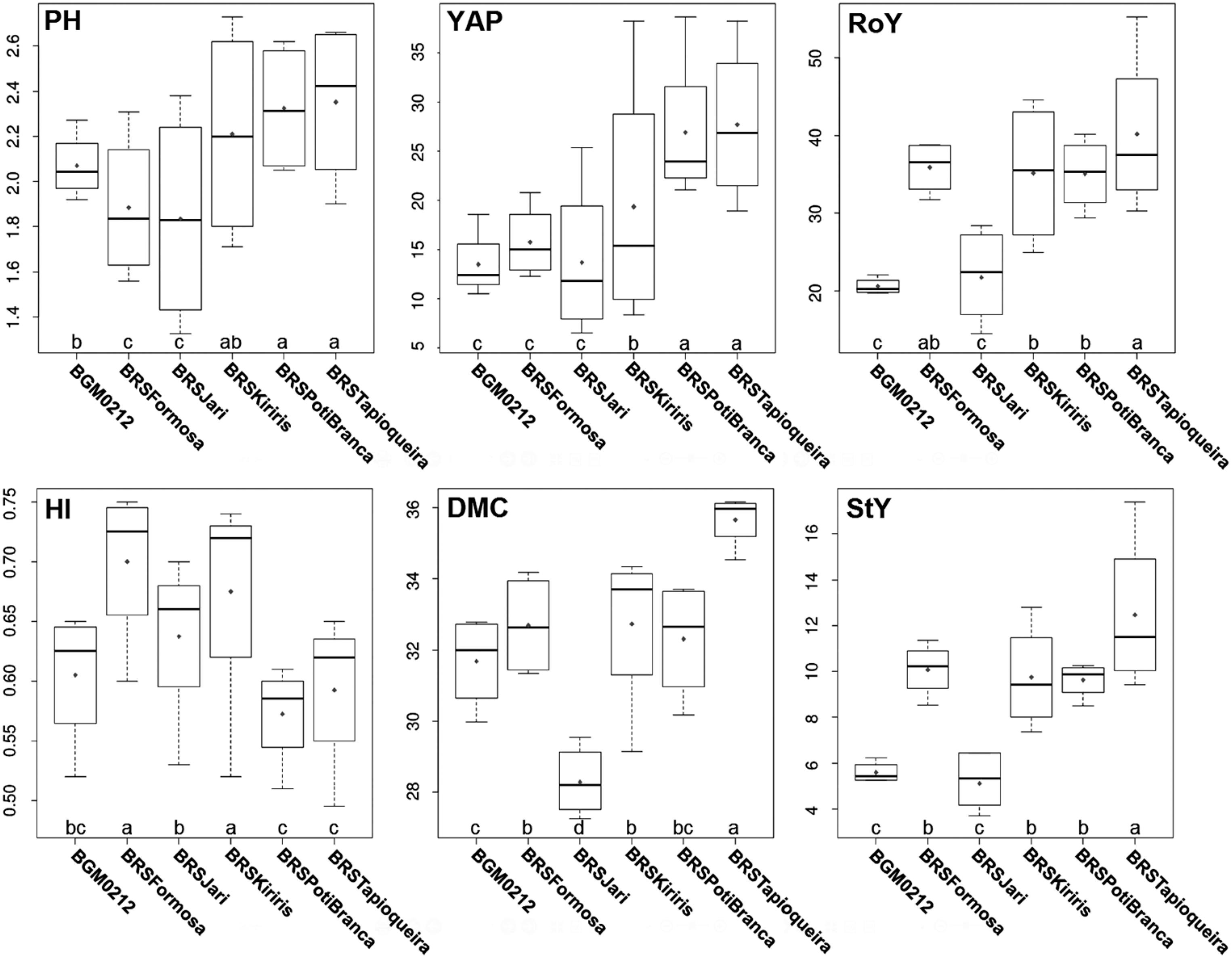ABSTRACT
Despite the widespread distribution of the Cassava common mosaic virus (CsCMV) in Brazil, little is known about the losses it causes in yield. The effect of CsCMV on different varieties was evaluated by reference to several agronomic traits. Four field trials were established in 2012/2013 and 2013/2014 using six varieties of cassava. Following mechanical inoculation with CsCMV, the presence of the virus was confirmed using the ELISA assay. The evaluated traits were plant height (PH), dry matter content (DMC), harvest index (HI), aerial part yield (APY), root yield (RoY), and starch yield (StY) in both inoculated and non-inoculated plants. Overall, the presence of the virus contributed little to the reduction in PH, HI, and DMC across the varieties, with PH being significantly reduced by 9.2 and 7.0 % in the BGM0212 and BRS Kiriris varieties, respectively. In contrast, APY, RoY, and StY were reduced by 30.2, 29.3, and 30.0 %, in the virus-infected plants respectively. While the BRS Kiriris and BRS Jari varieties suffered the highest reductions overall and were considered highly susceptible to CsCMV, none of the traits suffered reductions in the inoculated BRS Formosa plants. Although RoY and StY were reduced in inoculated plants of BRS Tapioqueira, crop yield for this variety was the highest. Thus, BRS Formosa and BRS Tapioqueira exhibited tolerance against CsCMV, which warrants further investigation.
Keywords:
Manihot esculenta Crantz; viruses; root yield; disease


